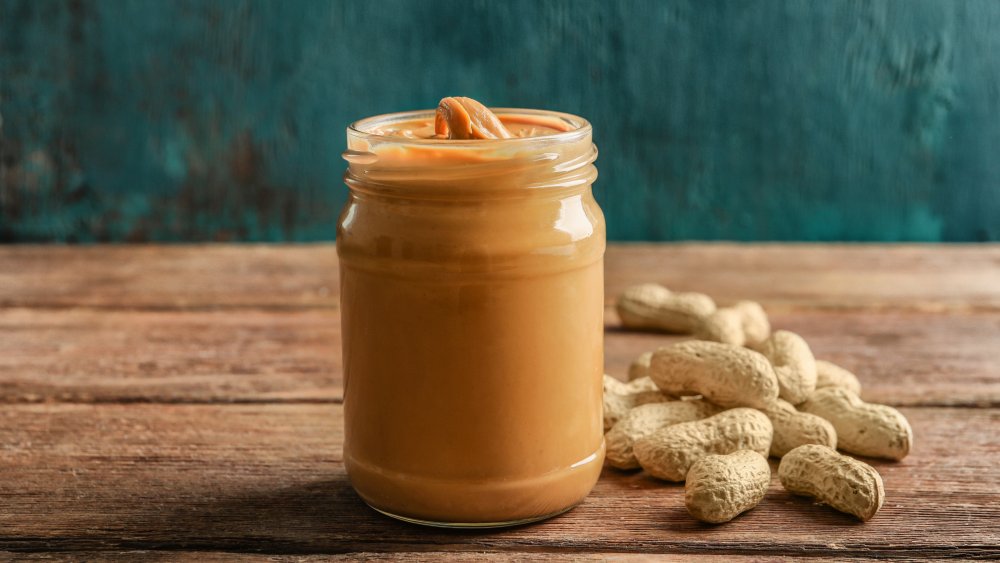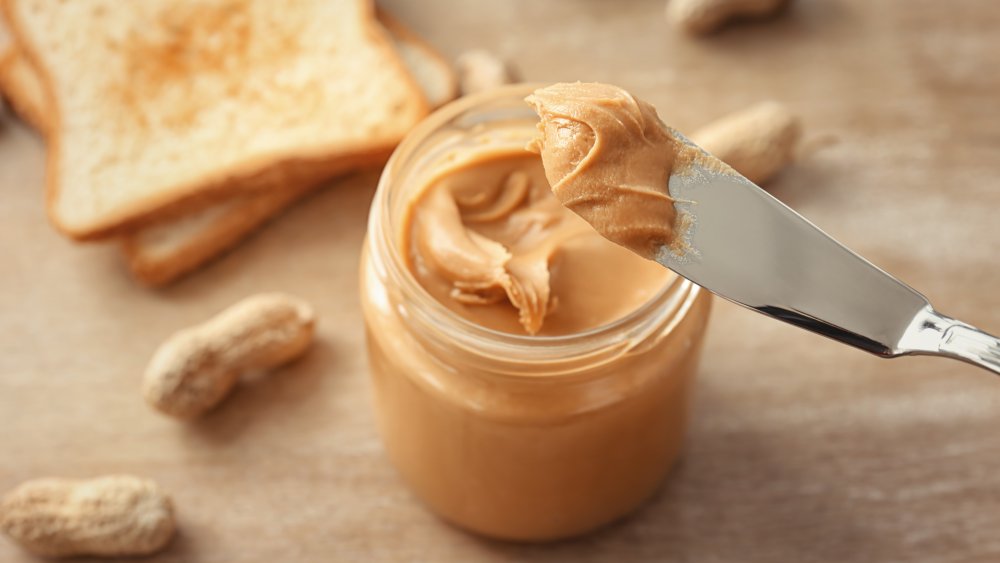The Real Difference Between Peter Pan And Jif Peanut Butter
Peanut butter lovers tend to have some definite opinions on what makes or breaks the spread, and no two kinds of peanut butter are created equal. Many enthusiasts have their favorite go-to brands, often because of their preference for texture and flavor. As two of the biggest brands out there, Peter Pan and Jif peanut butter are common choices. However, there are some big differences between the two.
The first real difference between the two brands of peanut butter comes down to how each tastes. And according to both Insider and Thrillist, Jif transcends Peter Pan. Jif has molasses added to it, so it tends to be sweeter than Peter Pan. Jif is also a lot smoother and spreadable than Peter Pan, which was deemed too thick, while lacking a deep roasted peanut flavor. Jif was thought to have a well-balanced sweet and salty flavor, though it was called a "dessert PB&J" by Thrillist.
But taste and texture are not the only ways Jif prevails over Peter Pan. It also carries a healthier edge over its competitor, though neither is exactly a champion of healthy foods.
The nutritional difference between Jif and Peter Pan
Some versions of Jif peanut butter are actually pretty healthy — looking at you, Natural Jif (via Today). If we focus on the original, smooth varieties, they're both bad for you. Jif is only marginally healthier than Peter Pan.
Jif Creamy is made with roasted peanuts and sugar, as well as 2 percent or less of molasses, fully hydrogenated soybean and rapeseed oils, mono- and diglycerides, and salt. Two tablespoons packs 190 calories, 7 grams of protein, 140 milligrams of sodium, 8 grams of carbs, 2 grams of fiber, and 3 grams of sugar. There are also 16 grams of fat with 3.5 grams of saturated fat (via Eat This Not That).
Creamy Peter Pan peanut butter is less healthy, which is unfortunate since it is one of the cheapest options. It's made with roasted peanuts and sugar, as well as 2 percent or less of hydrogenated cottonseed and rapeseed vegetable oils, and salt. Per 2 tablespoons, creamy Peter Pan packs 210 calories, 8 grams of protein, 140 milligrams of sodium, 6 grams of carbs, 2 grams of fiber, and 3 grams of sugar. To top it off, there are 17 grams of fat with 3 grams of saturated fat, which is more than a small McDonald's fry. As Eat This puts it, "If Peter Pan ate this, he'd be too fat to fly." So make your peanut butter choices carefully.

